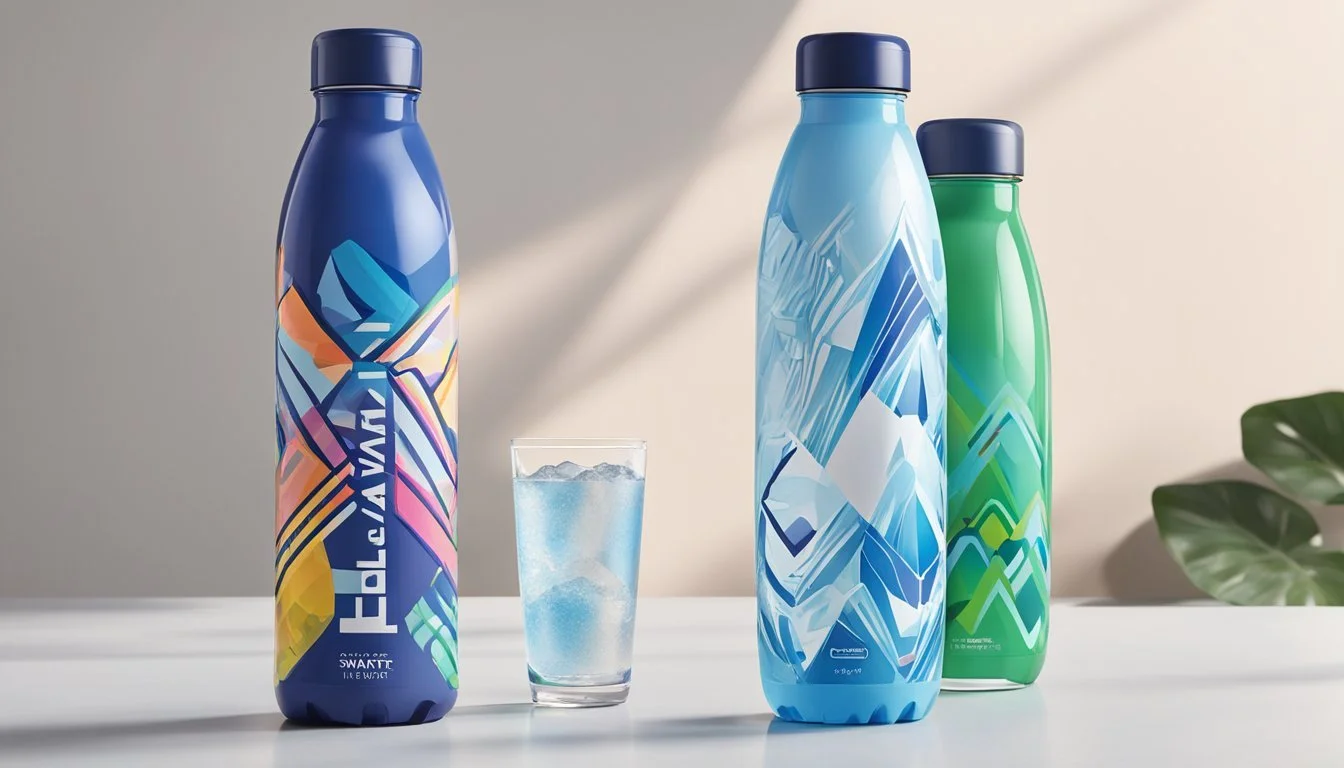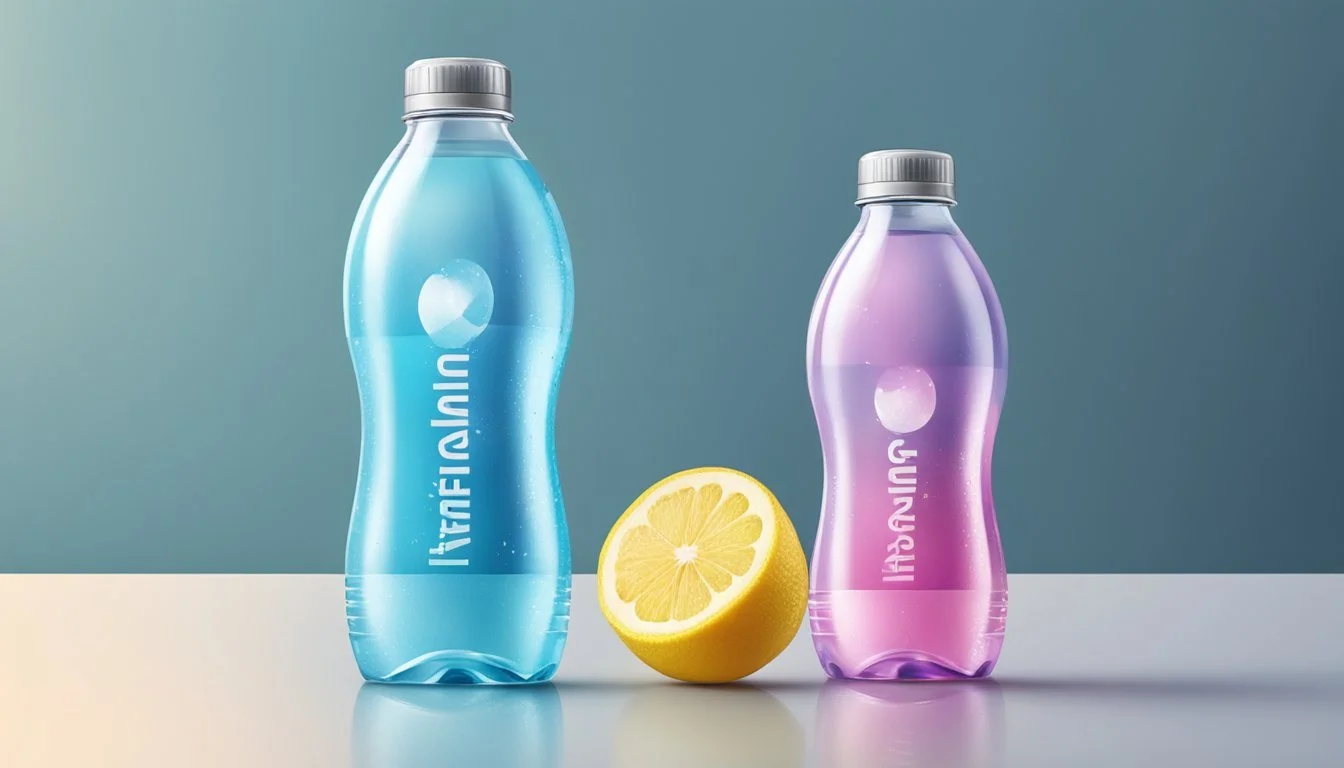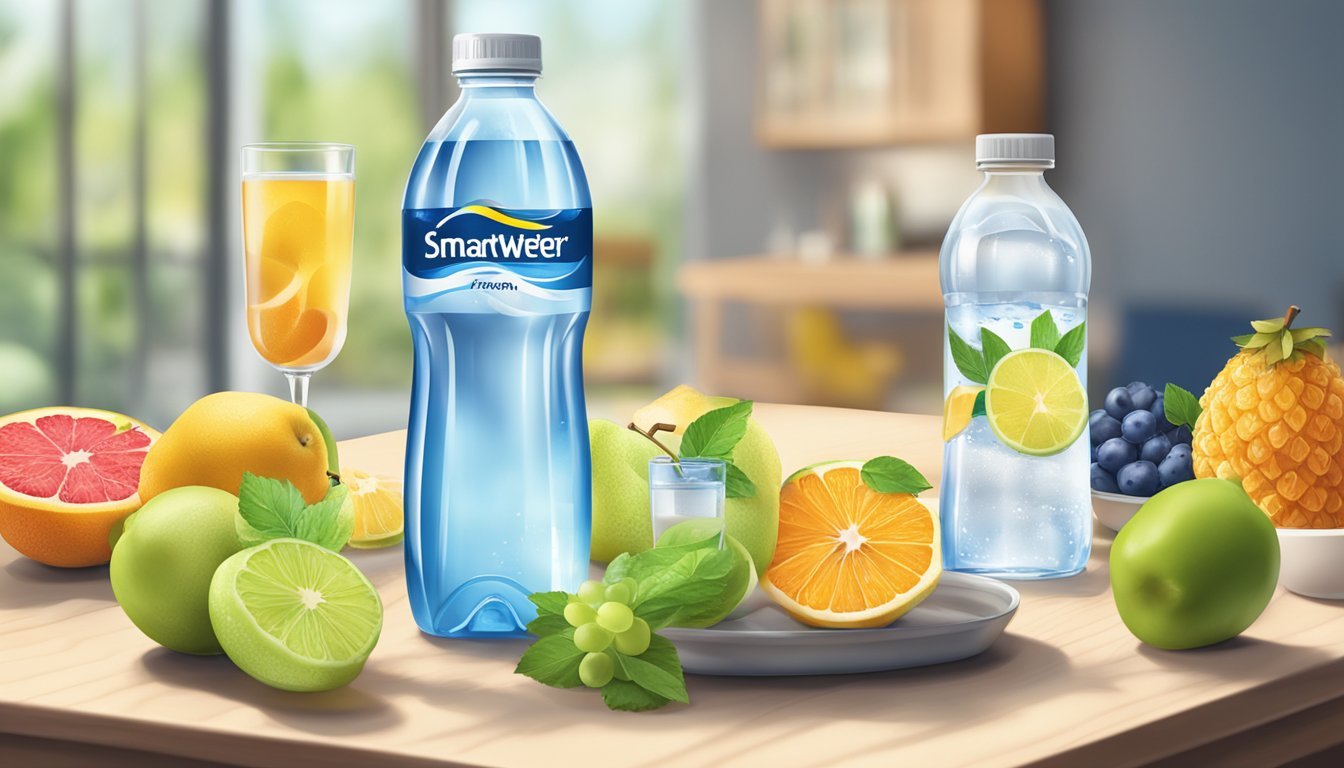LIFEWTR vs. Smartwater
Comprehensive Comparison of Bottled Waters
The quest to find the ultimate bottled water often comes down to personal preference, but some brands stand out in the market, with LIFEWTR and Smartwater being two of the most prominent. Each brand has positioned itself as more than just a source of hydration, emphasizing purity, design, and enhanced drinking experience. Consumers weigh their choices based on various factors including taste, the source of the water, the filtration process, and the presence of added electrolytes for taste.
LIFEWTR is known for its distinct packaging, which features rotating art from emerging artists, aiming to provide inspiration with every bottle. Beyond aesthetics, the brand focuses on a pH-balanced formula with added electrolytes for taste. In contrast, Smartwater prides itself on a vapor-distillation process modeled after the natural hydrologic cycle, with added electrolytes for a crisp finish. Despite these differences, both brands ultimately promise to offer clean and refreshing water.
The ongoing debate between the merits of LIFEWTR and Smartwater is multifaceted. Some consumers prefer the taste and brand ethos of LIFEWTR, while others gravitate towards Smartwater for its unique distillation process and established brand reputation. The decision often hinges on individual taste and priorities, as each brand brings its own approach to elevating the bottled water experience.
Comparing Brand Backgrounds
In the realm of bottled water, the origins and visions of LIFEWTR and Smartwater reflect the innovation and marketing strategies of their parent companies, PepsiCo and Glaceau, respectively.
LIFEWTR: The Vision and Company
PepsiCo introduced LIFEWTR in an effort to make a statement in the premium water segment. The brand emphasizes not only the quality of its product but also connects with art and design, packaging their water in bottles adorned with unique art pieces to inspire consumers. The water itself is marketed as pH balanced with added electrolytes for taste. It signifies PepsiCo's move to diversify and tap into the growing demand for healthier beverage options.
Smartwater: The Glaceau Origin
Smartwater has its roots with Glaceau, known for its innovation in the water category with its Vapor Distilled Water and Electrolytes for Taste. Introduced in the late 1990s, Smartwater was one of the early entries into the premium water market and quickly became associated with its sleek branding and association with celebrities. Glaceau, and by extension Smartwater, is now under the umbrella of Nestlé, further solidifying its position in the market as a sophisticated and technological advanced bottled water option.
Water Sources and Filtration Methods
When selecting bottled water, understanding the source and how the water is filtered provides insight into the product's quality. Both LIFEWTR and Smartwater utilize advanced purification methods to ensure safety and quality in their bottled water offerings.
LIFEWTR's Filtration Process
LIFEWTR sources its water from public water systems, commonly known as tap water. The brand then purifies this water using a rigorous multi-step filtration process. This includes:
Reverse osmosis, which removes dissolved inorganic solids by pushing tap water through a semi-permeable membrane.
Ultraviolet exposure and ozone treatment for additional purification and disinfection.
The result is purified water, which is then enhanced with electrolytes for a distinctive taste.
Smartwater's Vapor Distillation
Smartwater differentiates itself through its vapor distillation process, similar to the hydrologic cycle. Here's how it works:
Evaporation: Water is heated to create vapor and remove impurities and contaminants, including minerals and trace elements.
Condensation: The vapor cools and condenses into a purified state.
Post-distillation, Smartwater infuses electrolytes before bottling for a crisp, clean taste. Unlike brands like Aquafina or Dasani that also use purification processes, Smartwater's emphasis on vapor distillation sets it apart.
Taste and Mouthfeel
When comparing LIFEWTR and Smartwater, it's important to discern their taste profiles and how they feel in the mouth. Smartwater is known for its crisp, clean taste, often attributed to the process of vapor distillation and the addition of electrolytes for taste. It also typically includes a blend of calcium, magnesium, and potassium, giving it a balanced mineral profile that can enhance the overall mouthfeel.
LIFEWTR, on the other hand, is characterized by a fresh and pure taste that aficionados often describe as crisp with good taste. The brand emphasizes its pH balanced to match optimal body levels, which can equate to a smooth feeling on the palate. Although specific mineral content like calcium and magnesium levels in LIFEWTR are not highlighted as a key feature, its electrolyte enhancement focuses on providing a clean and pure taste.
Aspect LIFEWTR Smartwater Taste Crisp, pure, neutral Clean, crisp, balanced Electrolytes Enhances taste, pH balanced Added for taste profile Minerals Not specified for taste Calcium, magnesium, potassium pH Level Balanced to match the body’s pH Vapor distillation, slightly acidic
While both brands focus on delivering a high-quality water experience, LIFEWTR highlights the pH balance as a key component of its mouthfeel, while Smartwater utilizes a distinct blend of electrolytes and minerals that contribute to its signature taste. Neither of the waters have an overpowering flavor, which is perfect for consumers who prefer a subtle and refreshing beverage that doesn't deviate too far from the taste of pure water.
Health and Hydration
In the assessment of bottled water, two key aspects concern consumers: the presence of health-beneficial additives and the potential for harmful substances. Both LIFEWTR and Smartwater aim to support hydration with their products while maintaining safety and quality.
Beneficial Minerals and Electrolyte Content
LIFEWTR brand water includes electrolytes such as potassium and magnesium for taste. Electrolytes can play a role in body hydration, aiding in fluid balance and nerve signaling. Conversely, Smartwater is vapor-distilled with added electrolytes like calcium, potassium, and magnesium for taste. The process not only aims to purify the water but also to provide a clean and crisp taste that many consumers find appealing.
Brand Electrolytes Added LIFEWTR Potassium, Magnesium Smartwater Calcium, Potassium, Magnesium
Though the presence of beneficial minerals in water can support hydration, it is important to note that regular consumption of a balanced diet typically satisfies the body's electrolyte requirements.
Risk of Contaminants and Impurities
Bottled water is regulated by the FDA to ensure it meets stringent safety standards to limit the risk of contaminants such as bacteria, viruses, heavy metals, and chemicals like BPA. LIFEWTR utilizes reverse osmosis and ozonation to reduce the presence of potential contaminants, fluoride, chloride, and other impurities. Smartwater relies on vapor distillation, a process where water is turned into steam to remove impurities, followed by the reintroduction of electrolytes, minimizing the risk of exposure to these substances.
Brand Purification Method BPA-Free Packaging LIFEWTR Reverse Osmosis, Ozonation Yes Smartwater Vapor Distillation Yes
Both brands provide packaging that is BPA-free, addressing concerns about chemical leaching from plastic containers into the water. This is a key consideration for consumers prioritizing health and safety.
Packaging and Sustainability
In the realm of bottled water, packaging plays a crucial role in sustainability. It isn't merely a container but a statement on environmental impact. LIFEWTR and Smartwater brands have both taken steps toward eco-friendliness, but they differ in their approach to materials and design.
Eco-Friendly Initiatives
LIFEWTR has made a commitment to advancing environmental responsibility. One of their approaches includes using PET plastic bottles, which are widely recyclable. Additionally, LIFEWTR emphasizes its bottles are BPA free, ensuring a lower health risk to consumers and contributing to the broader sustainability goal.
In contrast, Smartwater has also adopted recyclable materials but has mainly focussed on creating a sleek bottle design while emphasizing the water's purity and its distillation process. Smartwater aims to be environmentally responsible, but its initiatives have less emphasis on the recyclability and more on the product’s quality and presentation.
Packaging Material and Design
Plastic Bottles: Both brands utilize plastic in their bottles, with LIFEWTR offering a distinctive artistic label design. However, as highlighted in the search results, heavier packaging such as glass could result in a higher environmental impact due to the increased energy used in production and recycling.
Sustainable Design: While both brands use similar materials, their design philosophies differ. LIFEWTR focuses on a combination of art and hydration, while Smartwater opts for minimalistic, clean lines that may appeal to consumers looking for a premium water experience. The choice of material design inherently affects the product's sustainability profile.
Through these efforts, both brands indicate a sense of responsibility towards sustainability, yet they choose different paths that reflect in their packaging and design.
Market Presence and Consumer Preferences
The competition between LIFEWTR and Smartwater extends beyond the quality of the water; market presence and consumer preferences play pivotal roles. The brands leverage advertising and consumer loyalty to solidify their standing in the bottled water market, each striving to be the consumer's top pick.
Brand Awareness and Advertising
LIFEWTR has gained considerable market presence through strategic advertising campaigns. Most notably, PepsiCo, the brand's parent company, has invested in high-profile advertising slots, including a 30-second Super Bowl ad, to showcase LIFEWTR to a massive audience. The brand distinguishes itself with artistically designed labels, aiming to resonate with consumers who appreciate creativity and convenience.
Smartwater, marketed by Coca-Cola, maintains its brand awareness through celebrity endorsements and a clean, minimalist branding strategy. Its market presence is reinforced by being perceived as a premium water brand, which consumers often associate with a higher standard in beverage consumption.
Sales and Consumer Loyalty
In terms of sales, both LIFEWTR and Smartwater command significant shares of the U.S. bottled water market. With both offering different bottle sizes, ranging from 700mL to 1L, PepsiCo has reported strong sales for LIFEWTR partly due to its high margin as a replacement for traditional carbonated soft drinks.
Consumer loyalty hinges on not just the taste but the perceived quality and benefits of the product. Smartwater, often perceived as a leader in the market, has enjoyed a loyal customer base due to its electrolyte-enhanced offerings. Conversely, LIFEWTR's approach to changing its label designs periodically caters to a consumer base that values novelty and artistic expression, alongside the beverage's hydration capabilities.
Both brands continue to vie for greater market share by tailoring their offerings to align with evolving consumer preferences. Convenience, packaging design, and the perceived purity of the water are key factors that influence consumer choices between LIFEWTR and Smartwater.
Comparative Analysis
In this section, the properties and consumer perceptions of LIFEWTR and Smartwater are critically assessed. Specific attributes such as PH levels, which influence taste and hydration, and consumer feedback, which reflects general satisfaction, are key focal points.
Head-to-Head Product Comparison
LIFEWTR and Smartwater are both premium bottled water brands that compete in the market with enhanced water offerings. Here's a comparison based on available information:
PH Level: LIFEWTR boasts a PH that is typically around 6.4 to 7.4, making it slightly more acidic to neutral. Smartwater is vapor-distilled with added electrolytes, giving it a pure taste and a higher PH level, often closer to 7.0, which is neutral.
Packaging and Branding: Both brands invest heavily in marketing, with LIFEWTR emphasizing artful labels and Smartwater promoting a clean, scientific image.
Brand PH Level Packaging LIFEWTR About 6.4 to 7.4 Art-inspired labels Smartwater Close to 7.0 Clean, minimalist appearance
Other brands such as Essentia, Fiji Water, Evian, Poland Spring, and Voss have also positioned themselves in the premium water market with varying features:
Essentia: Claims a PH of over 9.5, making it one of the most alkaline options.
Fiji Water: Natural artesian water known for its high silica content and smooth taste.
Evian: Sourced from the French Alps, touted for its mineral content.
Poland Spring: A popular brand in the northeast United States, comes from multiple springs.
Voss: Known for its distinctive cylindrical bottle and marketed as artesian water from Norway.
Consumer Reviews and Feedback
Consumer feedback for LIFEWTR and Smartwater can be distilled from various product reviews and ratings:
LIFEWTR is often praised for its crisp taste and unique label designs. However, it is sometimes seen as equivalent to other less premium waters in terms of taste, with the primary difference being its marketing approach.
Smartwater, on the other hand, is frequently recognized for its purity and refreshing taste. It tends to be associated with a more upscale market, which is reflected in consumer feedback that points to its positioning as a modern lifestyle choice.
Both brands receive critique regarding the environmental implications of using plastic bottles, which is a growing concern among consumers. Feedback for the aforementioned brands, such as Essentia, Fiji Water, Evian, Poland Spring, and Voss, also shares similar sentiments, with an added focus on specific attributes such as silica content in Fiji Water and the unique source of Evian.
Regulatory Standards and Certifications
When it comes to bottled water, regulatory standards and certifications are crucial to ensure safety and quality. LIFEWTR and Smartwater both comply with stringent regulatory requirements overseen by the U.S. Food and Drug Administration (FDA). FDA's regulations for bottled water must, by law, be as stringent as or more stringent than the Environmental Protection Agency (EPA) standards that apply to tap water.
The FDA's bottled water standards cover various contaminants, including:
Metals
Arsenic
Lead
Microbiological contaminants
Organic chemicals
These waters must not exceed the contaminant levels set by FDA regulations to be considered safe for consumption. The FDA mandates that bottled water must be tested for these contaminants regularly.
Certifications
Producers of bottled water can also seek certifications from independent organizations to attest to the quality of their water. Certifications, while not mandatory, are a way to demonstrate compliance with specific standards and may cover aspects not directly regulated by the FDA.
Testing for Metals and Other Inorganics
Both LIFEWTR and Smartwater undergo rigorous testing to detect any toxic metals, including arsenic and lead. These are naturally occurring elements that can be harmful in drinking water if they exceed the set limits.
Table: Regulatory Limits for Contaminants
Contaminant FDA Limit Arsenic 10 ppb Lead 5 ppb Mercury 2 ppb
(ppb = parts per billion)
Regular testing and compliance with FDA guidance ensure that the bottled water provided by these brands is safe for consumption. Hence, consumers can be confident in the quality of water they are drinking when choosing LIFEWTR or Smartwater.
Conclusion
When comparing LIFEWTR and Smartwater, consumers may consider several factors such as taste, price, brand philosophy, and availability. Both brands offer a purified water experience with distinctions primarily in branding and bottle design.
LIFEWTR is praised for its crisp taste and artistic bottle designs, aiming to provide hydration and inspire creativity. It is slightly heavier than Smartwater and aligns with parent company Pepsi's shift towards consumer health trends.
Smartwater, on the other hand, is vapor-distilled with added electrolytes for taste. Its popularity is buoyed by a reputation for purity and is often the choice for those seeking a straightforward and clean-tasting hydration option.
In terms of environmental impact, both brands fall under criticism due to the use of plastic bottles. Users concerned with this aspect may consider the effectiveness of their respective water filters to potentially reduce the environmental footprint.
Price comparison suggests that LIFEWTR is positioned as a premium alternative, often mirroring Smartwater's pricing strategy. Both waters are similarly accessible across various retail outlets.
In summary, the choice between LIFEWTR and Smartwater might boil down to personal preference in taste and bottle design, as their quality and price points do not drastically differ. For water filter compatibility, both brands are worth considering, with users often utilizing them in conjunction with popular filters like Sawyer for backcountry activities.









